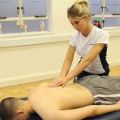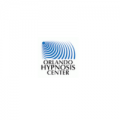How to Take Care of Your Retainer

Braces are worth the time, effort, and upkeep for various reasons, including improving one's smile and treating dental health issues. Regardless of its advantages, no one can deny the satisfaction you experience when the metal wires eventually come off. You now have the grin you've been waiting for - possibly for years.
With your braces removed, your orthodontist places a putty-like substance in your mouth and instructs you to use a retainer afterward. These orthodontic appliances are available in three varieties: fixed, Hawley, and Essix. What is the purpose of a retainer? After receiving braces, you must practice correct retainer wear and care to keep your smile beautiful.
This article will teach you everything you need to know to ensure your smile lasts a lifetime.
Do’s of wearing retainers
As with braces, there are a few "do's" when wearing your retainer:
- Wear your retainer as instructed. If your orthodontist recommends to wear it full-time, you should.
- Brush your retainer with cool water to completely clean it.
- When eating, remove your retainer.
- Keep your retainer in your mouth or a designated container at all times. Placing it somewhere may result in it being damaged or misplaced.
- Bring your retainer with you to your orthodontist appointment.
- If you wear your retainer case in public, write your name and phone number on it.
- Brush your teeth thoroughly after each meal and before putting on your retainer.
- Use your hands to place your retainer in your mouth. Before biting down, make sure it's properly in place. The jaw muscles have far more force than your hands, and biting down when misaligned can easily destroy your retainer.
Don’ts of wearing retainers
Of course, where there are do's, there are don'ts!
- Don't eat foods that can harm a retainer.
- Don't keep or place a retainer in a napkin or other item that could be misinterpreted as trash and discarded.
- Never leave a retainer outside of its container for too long. This orthodontic equipment can become brittle and delicate when it dries out.
- Don't boil or clean a retainer with alcohol.
- Don't play with your retainer in your mouth.
- Don't clean a retainer in the dishwasher.
- Don't bite your retainer to make it move.
- Leave a retainer out of reach of little children or animals.
- Don't eat with your retainer in.
- Do not use toothpaste on Hawley or clear retainers because it can be abrasive and produce scratches that let germs thrive.
- Do not use baking soda to clean your retainer. It's abrasive, like toothpaste, and can leave scratch marks on your retainer.
- Use a soft-bristled toothbrush to clean them instead of a hard-bristled toothbrush.
- Avoid soaking a retainer with mouthwash.
- To clean a retainer, do not use bleach.
- When you have a retainer on, you should only drink water.
- When participating in contact sports, do not leave your retainer in place. Put on a mouthguard.
- You should not swim with your retainer in your mouth. If it falls out of your mouth, you might have trouble finding it afterward. Furthermore, chlorinated water might harm the material.
- Don't expect a single set of retainers to last you a lifetime. While regular care and maintenance may increase their lifespan, you should contact your orthodontist if they become too damaged.
How to care for retainers after braces
Maintaining adequate oral hygiene while wearing a retainer after braces is critical. You risk tartar and plaque accumulation on your teeth and gums if you don't take regular retainer care. Fortunately, cleaning retainers is not difficult. Your retainer should last a long time if you follow a few simple care instructions.
If you wear a fixed retainer, you should get a floss threader to help you clean between the metal bar and your teeth. Brush your teeth with caution around the retainer, and try to get the bristles into the gap to eliminate food and other accumulation. Take your time brushing and flossing – being overly rough can cause problems.
You should clean removable retainers as frequently as you would your teeth, usually two to three times per day. You should clean them after every meal, ideally, so that no food particles or bacteria become caught between them and your teeth. When time is of the essence, a fast rinse in cool water will suffice. Scrub with a clean soft-bristled toothbrush in cool water for a deeper clean.
When using toothpaste and hard-bristled toothbrushes, exert caution. These can easily cause micro-scratches that harbor bacteria and are more difficult to remove. The simplest option is frequently the best when it comes to cleaning your retainer. If you wish to clean your retainer deep, consult your orthodontist for precise instructions so you don't damage it.
What should you do with your retainer if it breaks?
Accidents occur regularly. You have options for losing, damaging, or breaking your retainer. When the unavoidable happens, make an appointment with your orthodontist as soon as possible to get a new retainer. If you've had your retainer for less than a year, you should make an emergency appointment to get a new one manufactured. Remember that the longer you wait, the longer your teeth relapse to their original positions.
Other articles and publications:
Articles and publications of other companies:
- +1 (646) 270-9836
- Long Island City
- grantny.com













